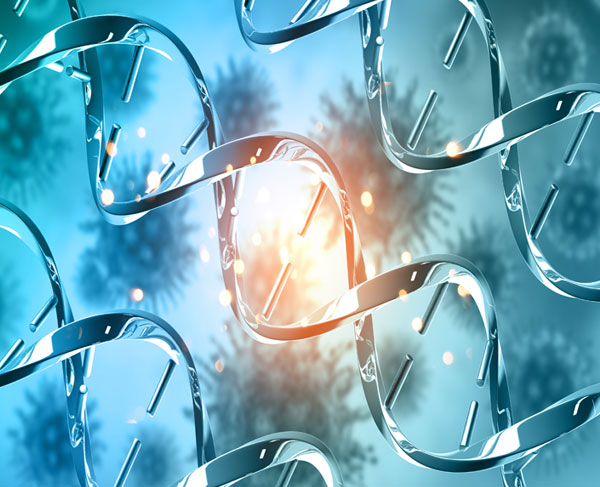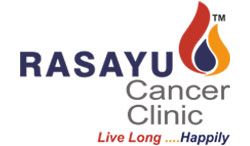Cancer Types
- Bladder Cancer
- Bone Cancer
- Breast Cancer
- Cervical Cancer
- Colorectal Cancer
- Endometrial Cancer
- Head & Neck Cancer
- Kidney Cancer
- Laryngeal Cancer
- Leukaemia
- Liver Cancer
- Lung Cancer
- Multiple Myeloma
- Nasopharyngeal Cancer
- Non-Hodgkin's Lymphoma
- Oesophagus Cancer
- Oral Cancer
- Ovarian Cancer
- Pancreatic Cancer
- Prostate Cancer
- Skin Cancer
- Stomach Cancer
- Testicular Cancer
- Thyroid Cancer
Opening Hours
- Monday - Saturday 10:00 am - 7.00 pm

Lung Cancer
- Lung cancer is top-ranked cancer in 2018 for new cases and mortality worldwide.
- As per Globocan 2018 report, there were 11.6% new lung cancer cases diagnosed in 2018 when 18.4%patients died of lung cancer in the same year.
- The 5-year survival of lung cancer is only 18%.
- There are mainly two types of lung cancer –
– Non-small cell lung cancer (NSCLC)- It is most common type of lung cancer. Around 80% of all lung cancer cases are NSCLC.
– Small cell lung cancer (SCLC)- This comprises about 15% of total lung cancer patients. - Lung cancer is the most common cancer occurring worldwide amongst male population.
- Other Types – These are rare types of Lung Cancer
– Adenosquamous carcinoma
– Large cell neuroendocrine carcinoma
– Salivary gland type lung carcinoma
– Lung carcinoids
– Mesothelioma
– Sarcomatoid carcinoma
– Malignant granular cell lung carcinoma
Causes
Smoking
- The incidence of Lung cancer is strongly correlated with cigarette smoking.
- About 90% of Lung cancers arise as a result of tobacco use.
- The risk of Lung cancer increases with the number of cigarettes smoked over time.
- However, there is no benchmarked safe level of exposure to tobacco smoke.
- Tobacco smoke contains over 4,000 chemical compounds, many of which have been shown to be cancer causing or carcinogenic.
- The two primary carcinogens in tobacco smoke are chemicals known as nitrosamines and polycyclic aromatic hydrocarbons.
Passive Smoking
- Research has shown that non-smokers who reside with a smoker have a 24% increase in risk for developing Lung cancer when compared with other non-smokers.
Radon Gas
- Radon is a naturally occurring radioactive gas. It is the most important cause of Lung cancer after smoking.
- It is estimated to cause between 3% and 14% of all Lung cancers.
Asbestos Fibers
- Asbestos fibers are silicate fibers that can persist for a lifetime in lung tissue following exposure to asbestos.
- The workplace is a common source of exposure to asbestos fibers.
- Risk of developing cancer and mesothelioma is higher in person who has a repeated exposure with asbestos.
Prior history of Lung Cancer
- Survivors of Lung cancer have a greater risk than the general population of developing a second Lung cancer.
- Survivors of non-small cell lung cancers have an added risk of 1%-2% per year for developing a second lung cancer.
- In survivors of small cell lung cancers, the risk for development of second cancers approaches 6% per year.
Air Pollution
- Air pollution, from vehicles, industry, and power plants, can raise the risk of developing lung cancer.
- Up to 1% of Lung Cancer deaths are attributable to breathing polluted air.
Lowered Immunity
- Research studies have proved that people with HIV or AIDS have a risk of Lung cancer that is 3 times higher than people who do not have HIV or AIDS.
- People who take drugs to suppress their immunity after an organ transplant have double the usual risk of Lung cancer.
Carcinogenic agents with sufficient evidence in humans (ref-IARC)
- Acheson process, occupational exposures associated with Aluminium production.
- Arsenic and inorganic arsenic compounds.
- Asbestos (all forms).
- Cadmium and cadmium compounds.
- Chromium(VI) compounds.
- Coal, indoor emissions from household combustion and coal gasification.
- Coke production and coal tar pitch.
- Engine exhaust, diesel.
- Hematite mining (underground).
- Iron and steel founding.
- Nickel compounds.
- Outdoor air pollution.
Painting and Welding fumes. - Plutonium.
- Radon-222 and its decay products.
- Rubber production industry.
- Silica dust and its crystalline elements, soot.
- Tobacco smoke, second-hand smoking.
- X-radiation, gamma-radiation.
Agents with limited evidence in humans (ref- IARC)
- Androgenic (anabolic) steroids.
- Acid mists, strong inorganic acids.
- Benzene.
- Biomass fuel (primarily wood smoke), indoor emissions from household combustion of coal.
- Carbon electrode manufacture.
- Cobalt metal with tungsten carbide.
- Fibrous silicon carbide and exposure to other fibrous material.
- Insecticides.
- Printing processes involving fine dust of inks.
- Lung diseases, such as tuberculosis, and chronic obstructive pulmonary disease (COPD), chronic bronchitis and emphysema (condition in which air sac is damaged) and past history of other lung diseases can cause inflammation and scarring in the lungs.
- Auto immune Disease – There is also in increased risk of Lung cancer in people who have some auto immune conditions.
Signs and Symptoms
- Coughing, especially if it persists or becomes intense.
- Pain in the chest, shoulder, or back unrelated to pain from coughing.
- A change in color or volume of sputum.
- Shortness of breath.
- Changes in the voice or being hoarse.
- Harsh sounds with each breath (stridor).
- Recurrent lung problems, such as bronchitis or pneumonia.
- Coughing up phlegm or mucus, especially if it is tinged with blood.
- Coughing up blood.
- Loss of appetite or unexplained weight loss.
- Muscle wasting (also known as cachexia).
- Fatigue etc.
Physical Examination and Investigations
- Physical examination and history
- Tissue sample (biopsy)
A sample of abnormal cells may be removed in a procedure called a biopsy. A biopsy sample may also be taken from lymph nodes or other areas where cancer has spread, such as your liver. - PET Scan/ MRI / CT Scan
– Scan study of your lungs may reveal an abnormal mass or nodule.
– A CT scan can reveal small lesions in your lungs that might not be detected on an X-ray. - Biomarker Investigation
– Tumor Markers are substances that are produced by cancer or by other cells of the body in response to cancer or certain non-cancerous conditions.
– In lung cancer Cytokeratin fragments and EGFR mutation analysis are considered. - Cancer Specific Test
– Sputum cytology : If you have a cough and are producing sputum, looking at the sputum under the microscope can sometimes reveal the presence of lung cancer cells.
Treatment
- To plan personalised treatment for each individual patient as every individual is different even if they have the same type of cancer.
- To improve health related quality of life (QOL) in all types and stages of cancer patients.
- To plan for partial or total regression of tumour depending on the nature of tumors.
- To increase overall survival (OS) of patients.
- To increase disease free survival (DFS) where complete resection of tumour is achieved.
- To provide a treatment option to patients who are refractory to conventional treatments like chemotherapy / radiotherapy / immunotherapy etc.
- To reduce the rate of growth of the tumor in recurrent and advanced staged cases.
- To increase progression free survival in advance cases.
- To reduce impact of symptoms related to progression of disease.
- To improve confidence of patients.
- To provide palliative support in end-of- life cancer cases.
- To add happiness and extension of life to cancer patients.
- To compliment other therapies like chemotherapy, radiotherapy in a synergistic way.
- To reduce severity or adverse effects of other conventional treatment. This reduces incidence and frequency of hospitalization.
- It is pertinent to note that Rasayu Cancer Clinic does not claim or blame anything while communicating any aspect to cancer patients.
- Rasayu Cancer Clinic focuses on Ayurveda fundamental based therapies.
- Rasayu Cancer Clinic believes in continuous improvement in service and science.
- Rasayu Cancer Clinic always advocates patient centric approach which leads to long and happy life of cancer patients.
- Every patient has a right to choose the therapy.
- Rasayu Cancer Clinic never imposes Rasayana therapy on patients but helps them to take the right decision, hence making patients/ relatives well aware about the disease and possible outcomes along with its risk benefit and cost benefit ratios.
- Rasayu Cancer Clinic is well connected with global updates in cancer care and therapies, through advisors and collaborations with national and international institutes.
Surgery
- The goal of surgery is the complete removal of the lung tumor and the nearby lymph nodes in the chest. The tumor must be removed with a surrounding border or margin of normal lung tissue.
A. Lobectomy –
The lungs have five lobes, three in the right lung and two in the left lung. A lobe containing tumor is removed in this procedure.
B. A wedge –If the surgeon cannot remove an entire lobe of the lung, the surgeon can remove the tumor, surrounded by a margin of normal lung.
C. Segmentectomy –This is another way to remove the cancer when an entire lobe of the lung cannot be removed. In a segmentectomy, the surgeon removes the portion of the lung where the cancer developed.
D. Pneumonectomy –If the tumor is close to the center of the chest, the surgeon may have to remove the entire lung.
E. Radiofrequency Ablation – Radiofrequency ablation (RFA) is the use of a needle inserted into the tumor to destroy the cancer with an electrical current. It is sometimes used for a lung tumor that cannot be removed with the other types of surgery listed above.
- Clinical Challenges : Treating Lung Cancer in Older Patients – Click Here
Radiation
- Radiation therapy is the use of high energy x-rays or other particles to destroy cancer cells. The most common type of radiation treatment is called external beam radiation therapy, which is radiation given from a machine outside the body.
- Like surgery, radiation therapy cannot be used to treat widespread cancer. Radiation only destroys cancer cells directly in the path of the radiation beam. It also damages the normal cells in its path, for this reason, it cannot be used to treat large areas of the body.
- Side effect of Radiation – Click Here
Chemotherapy
- Chemotherapy is the use of drugs to destroy cancer cells, usually by stopping the cancer cells ability to grow and divide.
- Systemic chemotherapy is delivered through the bloodstream to reach cancer cells throughout the body.
- A chemotherapy regimen usually consists of a specific number of cycles given over a set period of time.
- A patient may receive one drug at a time or combinations of different drugs at the same time.
- Chemotherapy may also damage normal cells in the body, including blood cells, skin cells, and nerve cells.
- This may cause low blood counts, an increased risk of infection, hair loss, mouth sores, and/or numbness or tingling in the hands and feet.
- Common chemotherapy side effects – Click Here
- Side effects of Chemotherapy – Click Here
- Adverse drug reactions (ADRs) of Chemotherapy – Click Here
Targeted Treatment
- It is a treatment that targets the cancer’s specific genes, proteins, or the tissue environment that contributes to cancer growth and survival. This type of treatment blocks the growth and spread of cancer cells while limiting damage to healthy cells.
- Targeted Therapy Side Effects – Click Here
Immunotherapy
- Efficacy of this treatment is still not clear as per the National Library of Medicine, since there is a need for improved biomarkers.
- Cost of the treatment is high and many times does not fit into cost benefit ration.
- Side effects – Click Here
- Risk and benefits of Immunotherapy – Click Here
- Side effects of Immunotherapy – Click Here
Rasayu Cancer Clinic Rasayan Treatment Protocol – To know more please click here
Rasayu Therapy is recommended for those :
- Who voluntarily opted for this treatment as their first choice.
- Who are disenchanted with the past treatments.
- Who do not see any other options of treatments.
- Who are looking for personalized treatment plan or precision medicine.
- Who desire a convenient home-based oral therapy which is easy for consumption.
- Who are susceptible to acquire hospital borne infections/ complications, hence not willing to be hospitalised.
- Who are looking for favourable risk benefit ratio.
- Who desire to improve Quality of Life benchmarks based on global standards and monitored regularly.
- Who wants to be involved in decision making for choice of treatment.
- Who are willing to be involved in monitoring the efficacy of Rasayana Therapy.
- Who believe in the transparency of the process by conducting regular investigations by biochemical parameters/ hi tech imaging techniques like PET scan etc.
- Who are looking for professionals being sensitive to the patient, the care givers and the family.
- Who desire to take even with other treatments including Chemotherapy / Radiotherapy.
Disclaimer : This Website contains certain links such as You Tube links, research paper links / website links / audio visuals / internet information already available in public domain. The information contained in the audio visuals is meant for use by qualified Medical Professionals. The content of the links etc has been made available for informational and educational purposes only. Rasayu Cancer Clinic and its associates do not make any warranties with respect to the accuracy, applicability, fitness, or the completeness of the content of such links etc. The information contained in such links represents the views and opinions of the original creator of such links and are not views endorsed by the Rasayu fraternity.


